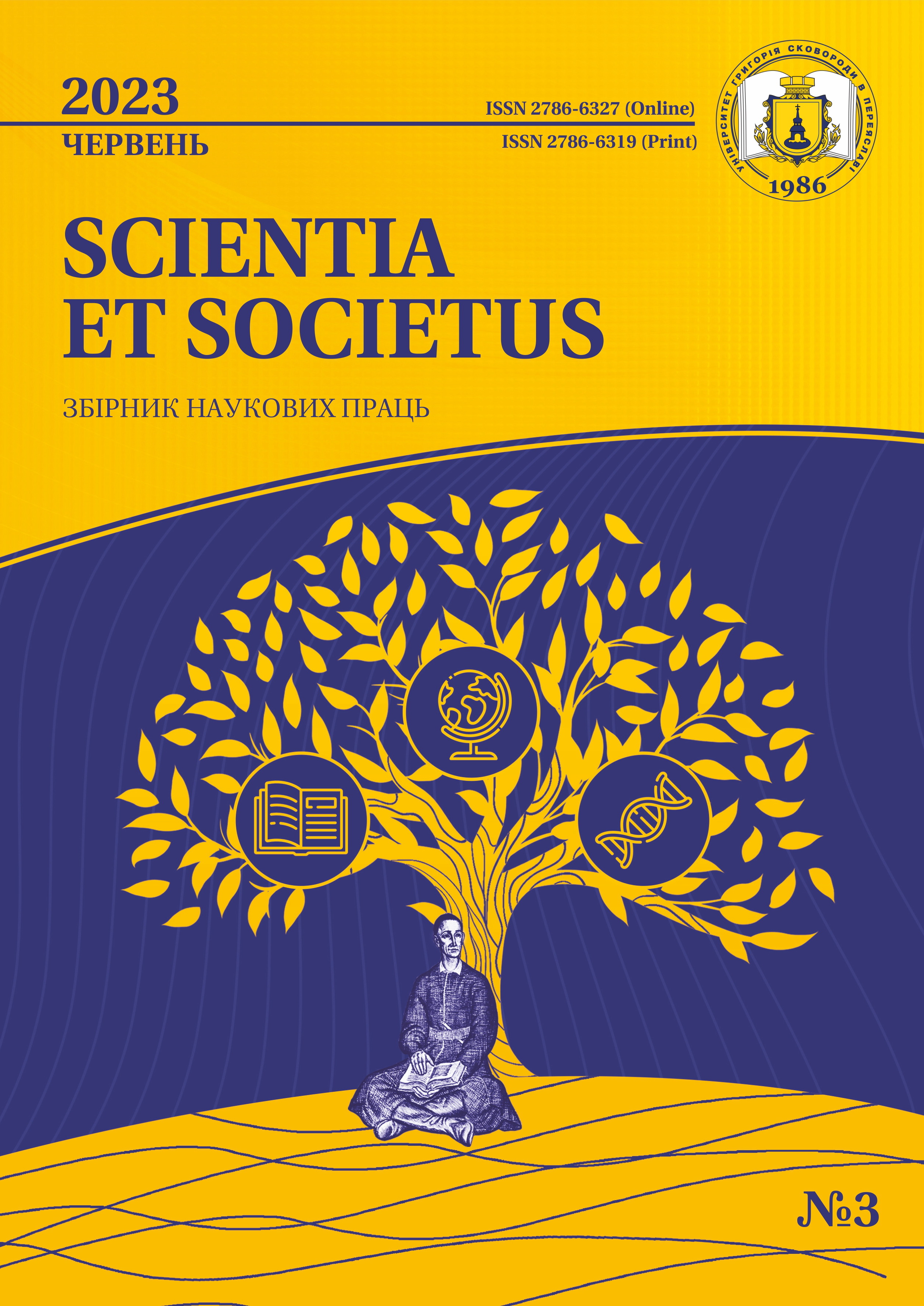PROFESSIONAL TRAINING OF FUTURE TRANSLATORS IN THE AGE OF ARTIFICIAL INTELLIGENCE
DOI:
https://doi.org/10.31470/2786-6327/2023/3/48-56Keywords:
training of future translators, institutions of higher education, artificial intelligence, automated translation systems, French experienceAbstract
In the article, the author set the goal of clarifying the role and place of Computer Assisted Translation (САТ) in improving the professional training of future translators. The publication examines the significance of САТ in translation practice, the main components of САТ, aspects of training translators using САТ, challenges associated with the use of САТ, prospects for the future development of САТ and their impact on the translation profession. Attention, in particular, is focused on the experience of French higher education institutions in training future translators. It has been proven that САТ is an indispensable tool in translation practice; CAT components interact with each other to create an effective automatic translation system; the training of translators using САТ includes a number of aspects aimed at mastering the necessary competencies, in particular: understanding the principles of operation of САТ; use CAT tools effectively; conduct terminological work; edit and correct automatic translation; to adapt to new CAT tools; think critically and evaluate the translation to identify errors, shortcomings or incorrect translations; the professional training of future translators in France in the era of artificial intelligence is adapted to new challenges and opportunities, as evidenced by the translator training programs offered, in particular, by universities such as L'université Paris III Sorbonne Nouvelle, l'Institut national des langues et civilizations orientales (Inalco), Université Paris VIII (Vincens-Saint-Denis), L'Université d'Aix-Marseille, Université Lyon II (Lumière). It is concluded that the professional training of future translators in France in the age of IA provides a balance between the development of traditional translation skills and new skills related to the use of IA. This approach enables future translators to effectively realize themselves in the modern environment, where artificial intelligence plays an increasingly important role.
References
Amelina, S. & Tarasenko, R. (2016). Oriientatsiia profesiinoi pidhotovky perekladachiv na vymohy mizhnarodnykh standartiv shchodo realizatsii perekladatskykh proektiv [Orientation of Translators Training to the Requirements of International Standards for the Implementation of Translation Projects]. Pedahohika formuvannia tvorchoi osobystosti u vyshchii i zahalnoosvitnii shkolakh – Pedagogy of Formation of Creative Personality in Higher and Secondary Schools, 51 (104), 60–65 [in Ukrainian].
Dovidnyk kvalifikatsiinykh kharakterystyk profesii pratsivnykiv [Handbook of qualification characteristics of employees' professions] (2015). https://ips.ligazakon.net/ Retrieved from http://surl.li/hfcdl [in Ukrainian].
Krasulia, A. & Turchyna, M. (2020). Vykorystannia instrumentiv shtuchnoho intelektu: porivnialnyi analiz system avtomatyzovanoho perekladu [Artificial intelligence tools applications: automated translation systems comparative analysis]. Naukovyi zhurnal Lvivskoho derzhavnoho universytetu bezpeky zhyttiediialnosti «Lvivskyi filolohichnyi chasopys» ‒ Scientific Journal of Lviv State University of Life Safety "Lviv Philological Journal", 8, 108‒113 [in Ukrainian].
Podhaietskyi, O. (2012). Evoliutsiia rozrobok u haluzi shtuchnoho intelektu v Ukraini ta sviti [Evolution of research in the field of artificial intelligence in Ukraine and the World]. Doslidzhennia z istorii tekhniky – Research on the history of technology, 16, 48‒54. https://ela.kpi.ua/ Retrieved from http://surl.li/hfcbu [in Ukrainian].
Sait Ministerstva tsyfrovoi transformatsii Ukrainy. Kontseptsiia rozvytku shtuchnoho intelektu v Ukraini [The Concept of Artificial Intelligence Development in Ukraine]. thedigital.gov.ua. Retrieved from http://surl.li/glyhc [in Ukrainian].
Slovnyk ukrainskoi movy online [Ukrainian Dictionary online]. (n. d.). services.ulif.org.ua http://services.ulif.org.ua/expl [in Ukrainian].
British Standards EN ISO 17100:2015 Translation Services. Requirements for translation services (2015). London: British Standards Institution, 2015, 30 [in English].
Site of L'université Paris III Sorbonne Nouvelle. http://www.univ-paris3.fr/ Retrieved from http://surl.li/hfcbz) [in French].
Site of l’Institut national des langues et civilisations orientales (Inalco). http://www.inalco.fr/ Retrieved from http://surl.li/hfccg [in French].
Site of Université Paris VIII (Vincens-Saint-Denis). https://www.univ-paris8.fr/ Retrieved from https://www.univ-paris8.fr/ [in French].
Site of l'Université d'Aix-Marseille. https://formations.univ-amu.fr/ Retrieved from https://formations.univ-amu.fr/fr/master/5HTI [in French].
Site of Université Lyon II (Lumière). https://www.univ-lyon2.fr/ Retrieved from https://www.univ-lyon2.fr/master-2-traduction-et-interpretation [in French].











